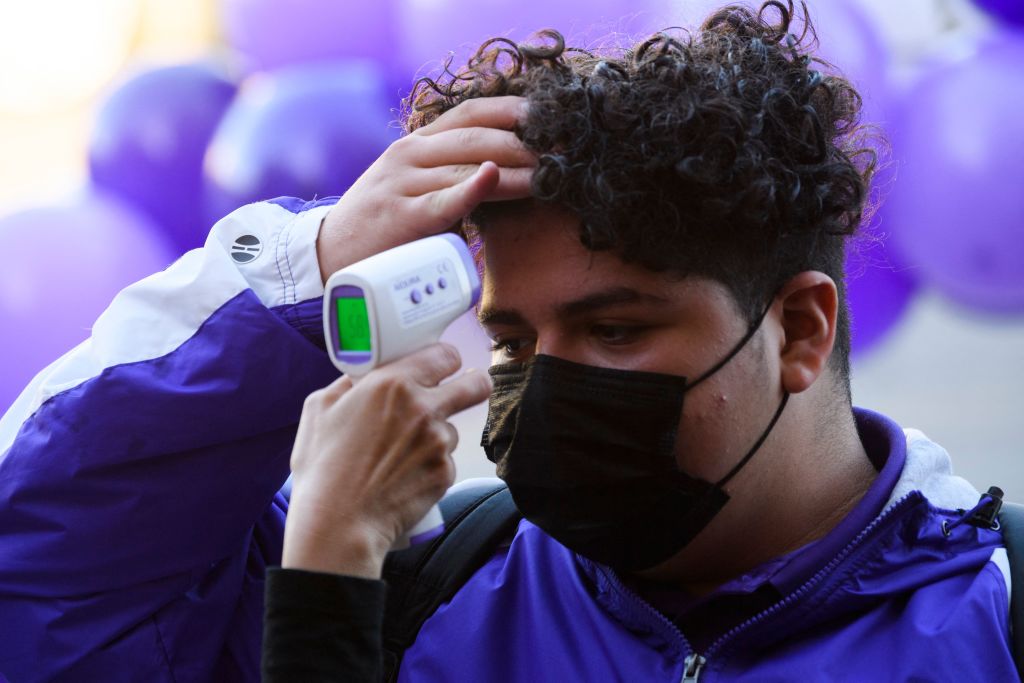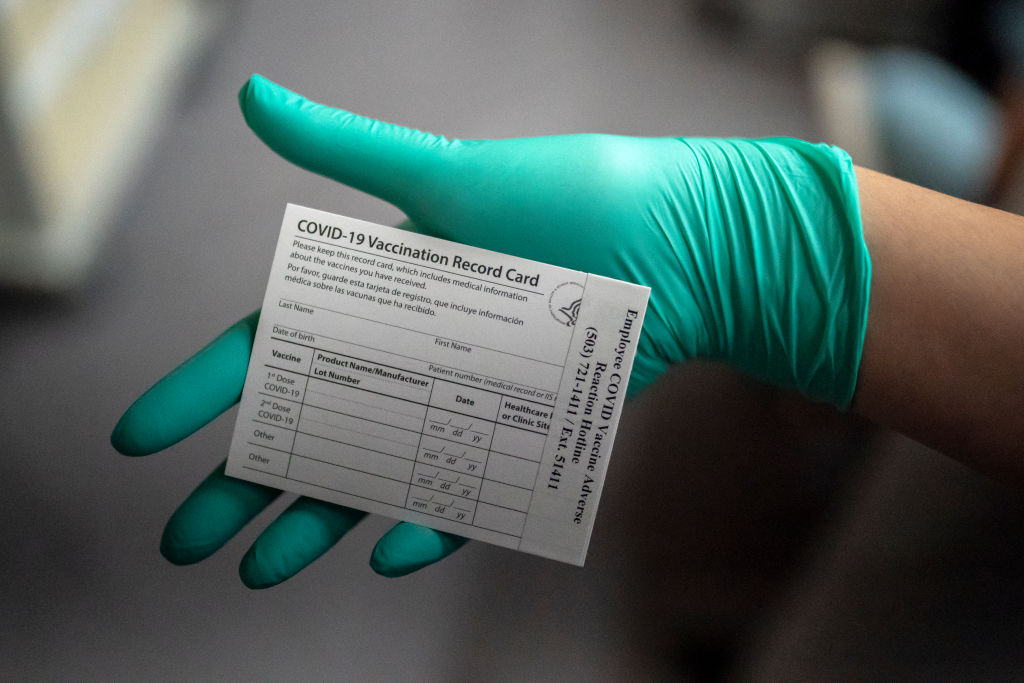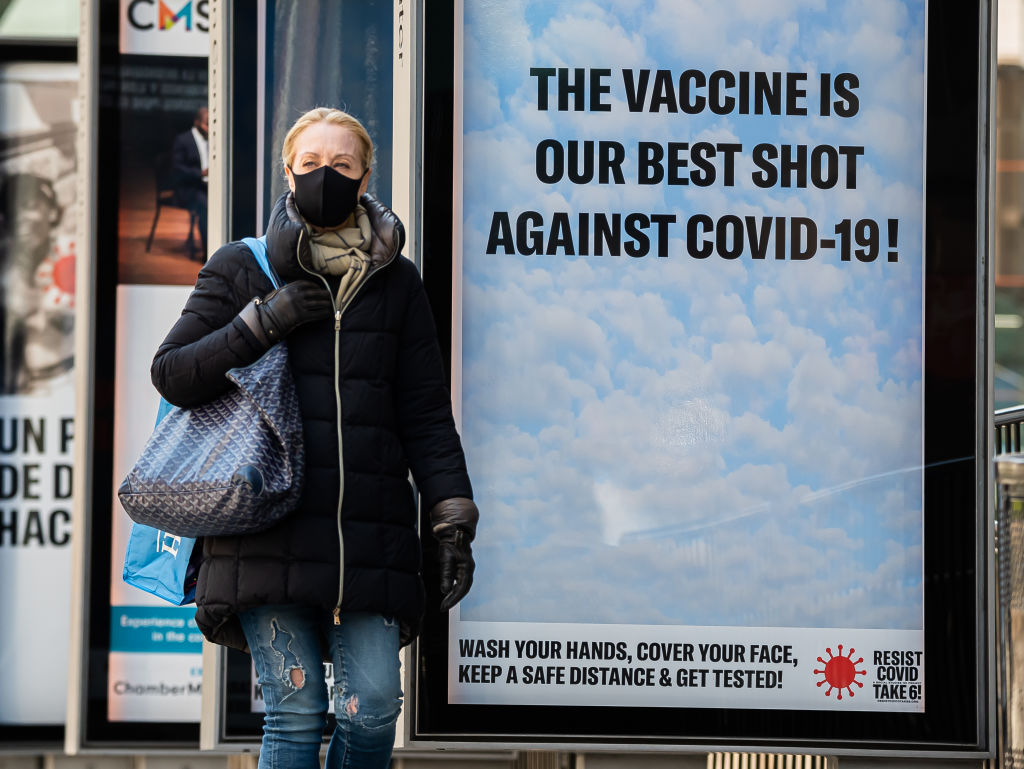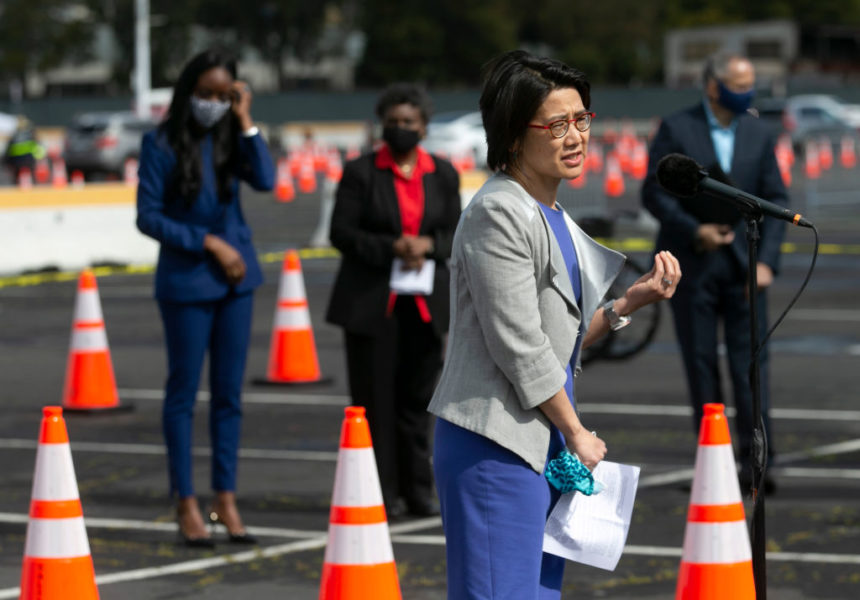During President Biden’s first formal news conference last Thursday, which lasted an hour, there were no—as in zero—questions from the press about the pandemic or vaccination. It was all about immigration, the filibuster and foreign policy. How can that be?
We have lots of questions: How close are we to herd immunity? What stands in the way? What do we do when we get there? When can we hug again?
That’s just for starters. When will shots for kids be available? How much should we worry about variants? Will we need boosters? How safe is it to go back to school/work/church/the movies?
One of the biggest takeaways from the pandemic, personally speaking, is that science is messy and that answers and advice will evolve as new evidence and real-world experience point the way. It’s like picking up the phone every day and hearing that familiar refrain: “Please listen closely as our menu options have changed.”
One piece of good news that comes through loud and clear: The mRNA vaccines (Pfizer, Moderna) were 80% effective in preventing SARS-CoV-2 infection, with or without symptoms, after one dose and 90% effective after two doses in studies that included nearly 4,000 healthcare personnel, first responders, and other essential workers. This is not a clinical trial. This is the real world, writ large.
Also encouraging is the news that 12,000 college students are being recruited for a special assignment: To help determine whether vaccines can not only prevent COVID-19 disease but also block transmission.
Meanwhile, Centers for Disease Control and Prevention director Dr, Rochelle Walensky began the week by voicing a “recurring feeling I have of impending doom.” COVID-19 cases, she noted, are surging once again, the tides rising not with the phases of the moon but with a risky mix of viruses spreading farther and farther as maskless humans draw closer and closer. President Biden is calling on states to hit the pause button on reopening and calling on us to hit the resume button on masking.
This edition of the Vaccine Project Newsletter is 3,038 words long and will take you 10 minutes to read.
The communications effort
It’s not science fiction, but rather science versus fiction.
- The challenge of combating healthcare misinformation and disinformation on social media will intensify as COVID-19 vaccine uptake progresses, Laura Entis reports in MM+M. Experts who’ve been battle-tested on this front in pre-pandemic years advise communicators to make sure messages are accurate and digestible (“being concise has never been more important”). Customize messaging to all audiences and add a personal touch, tapping into a reservoir of human empathy.
- Speaking of accurate, concise, customized and personal communication, comedian and TV host W. Kamau Bell hosts a five-minute video with about a dozen Black healthcare professionals and scientists, addressing COVID-19 vaccine concerns. It’s titled “The Conversation: Between Us, About Us.”
- TBWA\World Health’s wide-ranging #BlackHealthNow awareness initiative includes a thoughtful, insightful hour-long discussion on COVID vaccine and Black America.
- A series of 26 town hall meetings with nursing home staff found that vaccine misinformation is “widespread,” Alicia Lasek reports in McKnight’s Long-Term Care News. The sessions included 193 clinical and nonclinical employees from 50 facilities. One key takeaway: individual conversations focusing on positive emotions such as hope and altruism generate better results than simply sharing data, focusing on fears or using guilt or shame.
- The Institute for Healthcare Improvement agrees that “conversations matter” when it comes to building trust in vaccines. The hesitant, says IHI, “don’t want pamphlets from a public health team or to be hounded with letters or texts; they want to have an open, honest conversation with someone they can trust.”
- Senate majority leader Chuck Schumer (D-NY) wants the CDC to spend $1 billion on vaccine education. That’s all well and good, but grassroots efforts are likely to be more effective, says Aisha Langford, an assistant professor at NYU Langone Health. Langford, a vaccine “ambassador” who has appeared in numerous town halls, tells MM+M’s Lecia Bushak that embedded teams of local vaccine advocates—people from health departments, hospitals, churches and community centers—are best equipped to do “the heavy lifting around timely, accurate information, easing the burden on individuals to figure things out themselves on the Internet.”
- The Biden administration is channeling $10 billion to expand vaccine access, acceptance and uptake in communities of color, rural areas, low-income populations and other underserved communities. The money could be used, for example, for vaccine outreach, including door-to-door efforts, by faith-based groups, food banks, housing nonprofits or community health educators.
- STAT has put together a quick user’s guide to speaking with patients who are vaccine-hesitant. Some tips: have a true conversation (don’t lecture), listen and try to understand where the doubts are coming from, talk about vaccine safety, share personal stories, appeal to altruism (helping the community get back to normal) and be patient, realizing that the conversation will be different for each individual and that more than one discussion may be needed.
- The ranks of the vaccine-uncertain or -unwilling include people with autoimmune or rheumatic diseases. Some are concerned that vaccination might cause a flare-up of their underlying illnesses, while others just don’t trust the government or pharma. In Rheumatology Advisor, Meghna Rao interviews researchers from France and the Netherlands who have explored the issues with this patient population.
- When it comes to COVID-19 vaccination, Republicans who voted for Donald Trump are more likely to listen to their doctors or family members than to politicians – including Trump himself. That conclusion comes from a mid-March survey conducted for the deBeaumont Foundation. Overall, 78% said they may get vaccinated, though one in five would wait more than a year to do so.
- The Republicans in this survey indicated a preference for unbiased, unpoliticized facts and were likely to be swayed by statements such as these: If enough people are vaccinated, we can prevent 100,000 deaths or more; almost all doctors who have been offered the vaccine have taken it; and tens of thousands of people took part in Phase III clinical trials for the three vaccines now in use in the U.S., and no one was hospitalized or died.
The Takeaway: It’s reasonable to expect that reasonable people will have lots of reasonable questions about the hows and whys and whats of COVID-19 vaccine. The vaccines are only slightly newer than the disease itself. This is what education is all about.

The rollout
It’s springtime and vaccines are in bloom.
- States are moving right along in lowering age thresholds and otherwise opening wide the doors to vaccination, mindful of the presidential promise that all adults should be eligible by May 1. Biden is now saying that 90% of Americans will reach that status by April 19 and be within five miles of a vaccination site. The number of pharmacies offering vaccination will be doubled, to 40,000.
- All adults in Florida will be eligible for vaccination April 5 and all adults in California April 15. That puts you on a waiting list, the length of the queue depending on the vaccine supply du jour.
- It’s a tad confusing to toggle back and forth between the vaccinations given since Shot One on Day One (December 14, 2020) and the number given in Biden’s first 100 days in office (January 20-April 30, 2021). The number we focus on, just because we’re not big on split screens, is total shots in total arms.
- At this writing, 20% of the adult population and 50% of seniors 65+ are fully vaccinated. Let’s look at it as a glass that is filling. At the latest pace of vaccination in the U.S. (2.7 million shots a day) it will take another four months—which pushes us to the end of July—to vaccinate 75% of the population. However, the intent is to take it up another notch or two.
- The federal government is partnering with outpatient dialysis clinics to vaccinate patients and staff. People with chronic kidney disease are a prime example of a high-risk population. Of those who get sick with COVID-19, half need to be hospitalized and 20% to 30% die. CDC Director Walensky notes that advanced stage chronic kidney disease disproportionately affects minorities; 34% of patients receiving dialysis are Black and 19% are Hispanic. Dialysis centers can take this new assignment in stride: they already have experience giving shots for flu, pneumonia and hepatitis B. Jody Charnow offers helpful background in Renal & Urology News.
- Getting the staff at dialysis centers vaccinated is a critical part of the effort; to date only 35% of them have received their shots. The vaccination puzzle has missing pieces here, there and everywhere.
- More senior living operators are moving to mandatory COVID-19 vaccination of staff, Lois A. Bowers reports in McKnight’s Senior Living. Sunrise, based in McLean, VA, and Enlivant, headquartered in Chicago, are the fifth and tenth largest senior living operators in the country. They have given employees until July 31 and June 1, respectively, to be fully vaccinated. Sunrise told its community that increasing vaccination rates is “our best path forward to bring back more normalcy into our residents’ day-to-day lives.”
- Bowers and Kimberly Marselas note that the trend toward mandatory vaccination could spread beyond the long-term care industry, especially when the vaccines shift from emergency use authorization to full FDA approval. That could happen within the next month or so.
- At the same time, at least two dozen states are considering legislation to ban vaccination mandates and in Wisconsin a bill has reached the Governor’s desk, Marselas reports. Whether a ban on vaccination mandates would hold up in court is another matter.
- Rutgers, with a community of 71,000 students, has become the first to require COVID-19 vaccination for all returning to campus in the fall. Vaccination is strongly recommended but not mandatory as yet for faculty and other staff.
- A home care provider in Washington state achieved an employee vaccination rate of 87%—without a mandate—by explaining the science behind the development of COVID-19 vaccinations as well as the community benefit of getting vaccinated. Liza Berger has the story in McKnight’s Home Care Daily. A good number of senior care facilities have demonstrated that they can vaccinate 80% to 90% of their staff, far eclipsing the less-than-stellar average of 50% that prevailed one month ago.
- Amazon has begun its own rollout, setting up on-site vaccination clinics for frontline workers at fulfillment centers in Missouri, Nevada and Kansas, with plans to go nationwide. Amazon employees who don’t have access to the sites will receive up to $80 ($40 per dose) as an incentive to get their shots.
- Marriott International is offering fully vaccinated employees the equivalent of four hours of pay. A growing number of companies are offering direct payment incentives, paid time off to get vaccinated, or free rides to vaccination sites. Others are pondering mandatory vaccination policies.
- A mid-March Harris poll tells us that 69% of parents are very or somewhat likely to have their kids vaccinated when a pediatric COVID-19 vaccine is available. Nearly half of parents don’t want to attend public events until the whole family is vaccinated, whether it’s a large sporting event (54%), the movies (48%), summer camps (45%), getting on an airplane (43%) or amusement park (42%).
The Takeaway: We are having our temperature taken on a regular basis these days. It’s not just the forehead scan for 98.6, but the mental and emotional temperature taken by pandemic-era opinion polls. How are you feeling today?

The challenges
It’s no time to let down our guard. The yo-yo continues, with cases and hospitalizations up here and there and variants seemingly everywhere, including an ominous one arising in Tanzania and traveling outbound.
- Have we turned a corner? We’re at the corner, in the opinion of White House chief medical advisor Anthony Fauci. Or, as infectious disease expert William Schaffner described it, we’re in “a delicate and tenuous period of transition. We’re doing well but we’re not there yet.”
- At least a third of our military troops are turning down COVID-19 vaccination. Jimmy Panetta, a Navy veteran and Congressman from California, and six colleagues in the House have written to President Biden asking that vaccination be mandated. While the Pentagon can require other vaccines, the COVID-19 vaccines currently have emergency use authorization only. Until full FDA approval is granted, a Presidential waiver is needed.
- One reason the social media barrage against vaccines is not quieting down: Far-right extremists are attacking COVID-19 vaccines as a government plot. The New York Times explores the phenomenon.
- The attorneys general of 12 states have collaborated on a letter to Facebook and Twitter asking them to “identify and enforce” their policies in order to reduce the volume of misinformation about vaccines. Anti-vaxxer accounts on Facebook, Twitter, YouTube and Instagram reach an estimated 59 million people and often target individuals of color, according to the Center for Countering Digital Hate. The need for such an organization, which has been around since 2018, is a somber reflection of our times.
- A single dose of mRNA COVID-19 vaccine produced a strong immune response in just 17% of organ transplant recipients, according to early results of a study at Johns Hopkins. In a MedPage Today commentary, one of the study’s co-authors emphasized the need for a second dose and said “it is critically important for immunosuppressed individuals to realize that they are not necessarily immune after receiving the vaccine, and to talk to their providers about antibody testing before relaxing protective behaviors.” Data from the second dose are expected shortly.
- The pandemic’s toll on mental health shows no signs of letting up. Between August and February, the percentage of adults with recent symptoms of anxiety or a depressive disorder increased from 36.4% to 41.5%, the CDC reports. As of early February, one in four anxious or depressed adults said they needed but did not receive counseling or mental health therapy. The CDC frames it well: “The spread of disease and increase in deaths during large outbreaks of transmissible diseases is often associated with fear and grief.” Expanded use of tele-mental health could help.
- Leaders of the U.S. Conference of Catholic Bishops advise that, if given a choice, Catholics should opt for the Pfizer or Moderna vaccine as having the “least connection” to the use of abortion-derived cell lines. If neither is available, it is acceptable to receive the J&J vaccine, which was tested and is produced with the cell lines. Pfizer and Moderna used the cell lines in testing but not in production. The bishops would prefer “ethically irreproachable” vaccines, but given the global suffering the pandemic has caused, they agree that “being vaccinated can be an act of charity that serves the common good.” Meanwhile, Pope Francis received the Pfizer shots in January-February.
- COVID-19 vaccination of pregnant and lactating women “can confer robust maternal and neonatal immunity,” a conclusion published in the American Journal of Obstetrics and Gynecology. Good news for moms, good for babies, good for us all.
The Takeaway: The difference between standing on the corner and turning the corner is a matter of picking up the pace and staying a step ahead of whatever is gaining on you.

The vaccine dashboard
The success of the vaccination effort will shape the way we live in whatever post-pandemic or quasi-pandemic world lies ahead. It won’t be utopian or dystopian, just topian.
- Can COVID-19 vaccine prevent asymptomatic transmission of the virus? Some 12,000 college students on 21 campuses are going to help us find out. The Prevent CovidU study began recruiting participants last week, with a website saying cheerily, “Your plans are all cancelled anyway, might as well sign up and be a part of history.” They’ll help make history by taking nasal swabs every day for four months. The study, using the Moderna vaccine, is sponsored by the National Institute of Allergy and Infectious Diseases and designed and managed by the COVID-19 Prevention Network, headquartered at the Fred Hutchinson Cancer Research Center in Seattle.
- Pfizer/BioNTech has begun a clinical trial of COVID-19 vaccine in children from six months to 12 years of age, testing different doses and gauging immune responses. That’s in addition to a study in children 12 to 15, which reported promising early results on Wednesday. Moderna and AstraZeneca are also testing their vaccines in children.
- It may be baseball season, but the vaccine passport is already becoming a fraught political football – and one way or another, vaccine passports are on the way. A form of them is already in use in Israel and planned in Europe, among other locations, and U.S. versions are being developed as we speak. A public/private coalition called the Vaccination Credentialing Initiative is trying to smooth the way.
- Similar to a mobile airline boarding pass, New York’s Excelsior Pass carries digital proof of COVID-19 vaccination status and test results. Madison Square Garden and Albany’s Times Union Center will be using the technology, with other entertainment venues expected to follow suit. The program is free and voluntary, and not the only way to show proof of vaccination or negative test results.
- The United Nations Human Rights Council has issued a call for equitable, affordable, timely and universal access to COVID-19 vaccines worldwide. It cautions countries (you know who you are) against stockpiling vaccines or limiting exports to nations in need.
- Against that backdrop, here’s a headline to grab our attention: “Hidden toll of COVID in Africa threatens global pandemic progress.” Scientific American says that undercounting cases of the disease on that continent could lead to new variants that spread and spread.
- A spirited debate is unfolding on whether restrictions on the intellectual property of vaccine manufacturers should be relaxed temporarily to allow have-not countries quick access to vaccine-making technology. The White House is thinking about it; pharma doesn’t think much of it.
The Takeaway: Vaccines will continue to populate the front, science and business pages of the daily news, whether paper or digital. Or even nonfungible.
Parting shot
NYC Health.
…and some songs
Goldfinch Concerto, Antonio Vivaldi, Yoobin Son, flute
When Doves Cry, Prince & the Revolution
Thanks so much for tuning in today. Come back tomorrow, no foolin’, for our weekly Haymarket Coronavirus Briefing. Stay well.








